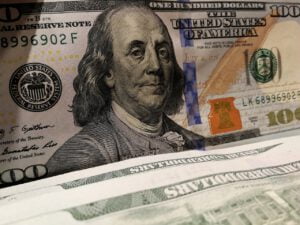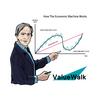How Do 528,000 New Jobs Drive Up Our Rate Of Inflation?

On Friday morning, the Bureau of Labor Statistics reported that our economy added 528,000 new jobs last month. Not only did this wipe out the last of the job losses from the COVID-19 pandemic, but it drove down our nation’s unemployment rate to just 3.5 percent – a 53-year low.
Yet within minutes, pundits were proclaiming that this massive job increase was terrible economic news. Please permit me to suggest that if putting 528,000 unemployed workers back to work is such terrible news, let’s have a lot more of it!
Q2 2022 hedge fund letters, conferences and more
You might want to ask what these pundits could possibly have been thinking. Well, they might have reasoned, all this new hiring would drive up our rate of inflation – which happens to be our number one economic problem.
That would indeed be a terrible consequence – if, of course, it were actually true. To find out, just open any introductory economics textbook – including my own – to the chapter on inflation.
Types Of Inflation
There are two main types of inflation – cost-push and demand-pull. Under cost-push inflation, prices are driven up because as employers’ costs go up, and they nearly always try to pass their cost increases on to their customers.
And under demand-pull inflation, prices are driven up because a scarcity of goods and services causes buyers to bid up prices. Sellers, of course, are complicit in this process. They are quite happy to sell their goods to the highest bidders.
Now, can you figure out how the hiring of 528,000 new employees creates cost-push inflation or demand-pull inflation? Take your time.
If you can explain to me how that happens, you’re a better economist than I am, and maybe you should consider writing an economics text. But I can’t for the life of me see how hiring more workers is inflationary. On the contrary, doing that would actually appear to lower inflation – at least if it’s a demand-pull inflation.
Economists describe a demand-pull inflation as one under which too many dollars are chasing too few goods. But when over a half a million new workers are added to the workforce, and they begin turning out additional goods and services, then we have the same amount of dollars chasing more goods and services So when you think about it, you’ll realize that that the hiring of 528,000 additional workers actually would tend to drive down prices.
In sum, if some misguided souls want to claim that the hiring of all these additional workers is bad economic news, then let’s hope for a lot more of that bad news in the coming months.
Updated on
Source valuewalk






